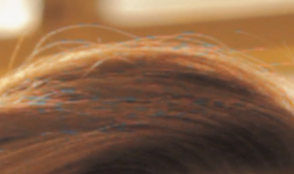Home
News
Projects
Music Videos
Contact Us
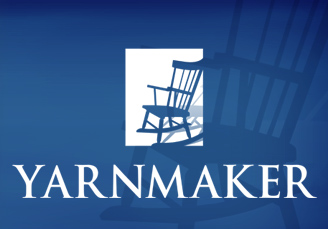
By Jason Kempnich - 7 April 2010 Canon's new EOS 5D Mark II, EOS 7d, and EOS 1D Mark IV digital SLR cameras have heralded a new era of digital cinematography, placing the ability to produce amazing images firmly within the grasp of talented budget shooters. A lot has transpired in the year since Yarnmaker first wrote on the possibility of using an EOS in lieu of a more traditional cine camera. Back then, we said the Canon EOS 5D Mark 2 was an amazing camera, but was falling short of being dependable in an on-set environment. Several firmware updates have occurred since then, bringing much needed features. This paper will examine the possibility of using these digital SLR's to produce an ultra-low budget feature film. Specifically, I will be examining the Canon EOS 5D Mark II, as that is the EOS I have the most hours of flight time with. It's an amazing 21.1 megapixel dSLR, no question. But Yarnmaker is interested in the world first that it offers: a 35mm sized CMOS sensor, compatible with existing Canon 35mm lenses, that can capture full motion 1920 x 1080 Progressive video. All this in a dSLR body with a price tag far below the optically inferior fixed-lens "prosumer" HD cameras. Using a dSLR to shoot low budget cinema may seem unconventional, even unprofessional at first. But remember, there have been several commercially successful releases shot on a Standard Definition DV source such as 28 Days Later. So why not shoot on something better ... if it is better? In September 2009, Yarnmaker produced a 15 minute short film titled Unrepentant. Traditionally, we would have shot on Super 16 and telecined to HD. However after extensive tests, we decided on using the Canon EOS 5D Mark II as a trial for a feature length project in the works. We used a professional crew with highly experienced camera assistants and gaffers to help set the benchmark of what is "normal", thereby highlighting where the Canon EOS 5D Mark II had its strengths and weaknesses. There has been a lot of hype on the 5D Mark 2's potential use for low budget, but still sexy Cinematography. This was backed up by some early, well shot footage from Vincent Laforet. Its 1080P images with shallow depth of field and amazing low light range with varible ISO has made for some fantastic eye candy on the internet. But how realistic is the dream to use the EOS 5D Mark 2 as a serious Cinematography tool on a feature film? Can it meet the needs of a professional Cinematographer or a talented no-budget Director under time constraints? At the time of writing with firmware version 2.0.4, the answer is "it can", but you must be prepared to work with the camera at all times, not against it. And choose your project carefully! A history of firmware updates By far the most significant and yet simplest problems with the Canon EOS 5D Mark 2 were related to simple firmware functions. Early in 2009 the lack of manual aperture, ISO and shutter speed control was killing any thoughts of using the camera seriously, as was the 30 frames per second frame rate (29.97 fps was needed in North America and Japan, and the rest of the world wanted 25 fps) . After a long and vocal internet-protest, the Canon faithful were partially rewarded with manual aperture controls. Almost a year later, Canon delivered 24 fps, 25 fps, and 29.97 fps, brining the EOS 5D Mk II into line with the newer 7D and 1D Mk 4 models. Additional audio features were also thrown in. From our point of view, these two firmware updates corrected the most fixable flaws in the EOS 5D Mark II. Several significant flaws remain, as they do in the 7D and 1D Mk 4, but in our opinion these flaws would require a complete rethink from Canon and a new camera to correct. Overall image quality We all know these cameras spit out an amazing 1080P image. This is especially so for low light. In general, the dSLRs seem to hold a quality colour image into faster ISOs than any other technology available today. You can shoot in moonlight, or candlelight! So I don't have to tell you what is good about the camera. We're going to look at where these cameras might trip up a motion picture production, so prospective producers and directors can arm themselves. Lenses Up the front, you have Canon's ample product range of 35mm prime, telephoto and tilt shift lenses to choose from, and a few aftermarket ones. Some of these go down to F1.2. This vast and impressive product array is more than capable of capturing beautiful images, with a few major caveats for motion pictures. Firstly, the lenses are missing a lens ring gear for a follow focus. Fortunately, this is easily solved with aftermarket products allowing to you attach a removable outer ring gear that a follow focus will mesh with. Production rails, baseplates, matteboxes, follow focus, and even steadycam mounts are already available from various companies. But, it's still an imperfect solution and will no doubt annoy your First AC on an hourly basis. A second caveat is that the lenses are not clearly labelled with distance markers. You'll need to look through a small window above the lens to see feet and meters reading. But the camera does have a "film plane" mark drawn on it, so your First AC will know where to measure from. Thirdly, if you need to change your aperture during a take (such as moving from indoors to outdoors), then forget it! Understandably, the official Canon lenses are modern stills lenses, so they do not have a free moving aperture control as a normal motion picture lens would. Instead, each third-of-a-stop is "notched" and selected electronically. This means sudden and obvious changes in image brightness as the camera switches between stops. Fine between takes, unusable during a take. Finally, and perhaps most significantly, Canon stills lenses are not designed to offer repeatable focus points. That is, if you mark your focus point on a Follow Focus with a Canon Lens, and then move off focus, when you return to your focus point, chances are the focus will be out by an inch or even a little more. This will have a significant impact on setup time when your First AC rechecks their marks and finds they have drifted. More significantly, you are exposed to the possibility of being soft on any number of shots where the First AC believes they are on the mark. Unless you're playing back in 1080P, you probably won't spot it on set. We worked around this problem by ensuring a focus check after each take: the camera has a focus assist zoom function, so we would hold the actors and check the focus after a take to ensure we ended sharp. Not much help though for complex moves. When you take into consideration the 5D's slightly larger-than-35mm-film sensor size, the focus issues become even more critical. Perhaps then the better lens option is to give the Canon EF lenses a wide berth, using instead a good quality lens mount adaptor and another brand of lens that isn't electronic. Update May 2010: Third party cine-style manual lenses for the Canon EF mount are now being announced, with Carl Zeiss leading the charge. On-set monitoring This is an area that will no doubt grow as the market grows, but currently there isn't a lot of choice in terms of HDMI capable on set monitors. The mini HDMI out offers 1080p images, but only when the camera is at rest. Once buttoned on, the image drops back to standard def which may lend itself to the Director and crew missing soft focus shots. More importantly, the act of changing resolution can mean some monitors may take a significant amount of time reacquiring their sync. Some may not even recover. Keep in mind this occurs after the all critical "Roll camera" is called. Know your kit. HDMI doesn't lend itself to splitting either, and I am yet to see a HDMI capable monitor that will allow you to daisy chain another one (although I am sure one is coming). This could mean problems for an on-board monitor when the Director also requires their own monitor. I should also mention that using a video-out port on the Canon EOS 5D Mark 2 will result in the camera's rear 3 inch LCD display being disabled, robbing you of a potential on-board monitor. The composite video out on the Canon EOS 5D Mark II is low res and generally speaking, not very good. Using composite should be avoided if possible. The only other significant issue with on-set monitoring is the abundance of on-screen information from the camera itself, obscuring a significant portion of the screen. Hitting record clears away a reasonable amount of this, but some still remains. This means recording via HDMI is not an alternative to the camera's own MOV format. Eye piece There is none. Not much else to say. In order to go into video mode, the camera must store its "reflex" mirror in an upright position, exposing the CMOS to the lens. This means the camera's eye piece is rendered inoperable. Besides using an on-board monitor for the camera operator, the only other option is to use the camera's own 3 inch LCD. There are some aftermarket eye pieces for these LCD screens - the best ones clip onto the camera's body. The worst ones are tied on with rubber bands. If you go down this path, research your choice carefully as a bad choice will leave you with an unusable eye piece. Most importantly, consider the camera operator's ergonomics. In most cases, it will be difficult to look through the eye piece whilst maintaining good ergonomics. Picture Styles The Canon EOS 5D Mark II has a reasonable sharp, contrasty image out of the box. The camera allows you to preset Picture Styles, saving the creative image choices for post production. We have found a mostly flat response curve with no sharpening to be optimal for post grading choices, as is the case with the new Kodak Vision 2 and Vision 3 films. There's plenty of debate over on cinema5d.com as to which style is the most effective, but the upthrust is you do not have to lose precious data due to unwanted aggressive in-camera grading. Electronic shutter wobble AKA Jelly AKA Skew In my opinion, this is one of the two biggest problems this camera has: shutter wobble, or jelly shutter, or skew, or just plain old image wobble. The effect is most pronounced on objects moving across the frame, from left to right or vice versa. It will appear as if the object is heavily slanted or skewed as it moves, and the faster it moves, the more heavy the skew. This is because of the way a CMOS sensor is read: With film and CCD cameras, the information is exposed across the image plane concurrently. With a CMOS, it is read line by line starting from the top, until the entire CMOS is read for the shutter duration. Because of this, if an object is in motion during that frame, the bottom parts of the frame will represent a slightly later moment in time than the top parts, generating the skew effect. This makes doing any side-on movement shots, pans, even simple side-on dolly moves, out of a dSLR's reach. You can forget anything fast moving, like a car chase, or even a fight scene. A faster shutter speed only highlights the skew. Fortunately, the effect is imperceptible for three quarter angled or head-on dolly moves, all slow moves (including slow pans), and normal human movement. This prompts me to advise: when choosing to use a 5D Mk II, 7D, or 1D Mk IV, make sure your project isn't an action block buster. The jelly shutter is going to be least noticed on a quaint little chamber piece where two characters talk to each other for most of the film. There are expensive plug-ins appearing each day for edit software that will de-skew an image, but ultimately this is creating pixels where there are none in places. That is always fraught with problems and will annoy some, and not worry others. As software gets better, so will the generated images. In my opinion, this is an unfixable problem with the current generation of cameras. They just don't read the CMOS fast enough and no amount of firmware updates will change what is ultimately a hardware issue. Either work around it by choosing your subject matter carefully, or do not use the camera. In our recent short film, there were many aesthetically pleasing shots I wanted to shoot, but we did not because we knew the skew would render the shot useless. This was the first major issue of the tail wagging the dog for this camera. Line moire Since we're on a roll, we may as well get straight onto the other major, unfixable shortcoming. In some circumstances, the 5D Mk 2 video suffers from a line moire like effect. Because the camera is 21.1 megapixels, a significant number of those pixels are discarded in real-time as the 1080P video file is being created in the camera. To resize it properly would be an unfair expectation on the hardware - it's just not fast enough. This discarding can create a line moire like effect on exceptionally thin lines in your images where they are near horizontal in relation to the camera's pixel array.
This image is unmagnified and cropped straight out of a 1080p output file. In the blonde hair, various strands break up into green and pink alternating moire lines, especially in the bottom half of this sample. This is what the line moire can look like on a human body. Wardrobe, walls, buildings and vehicles are other likely sources of moire and the effect is even more pronounced when the vision is in motion because the pink and green segments pop and change. In shots where moire is very noticeable, even reducing the image back to standard definition does not save it. The line moire effect can be reduced a little by doing a chroma blur in post production - that is, you're blurring the chroma channels, not the luma. This is exactly the same process that used to be done on DV to help it key better on greenscreens, although for different reasons. This will allow the image to remain sharp, whilst taking the edge off the pink and green pixels. The downside is your image will gradually become less and less vibrant as you increase the chroma blur. Once again, I found this to be a case of the tail wagging the dog in terms of production choices. Wardrobe was heavily monitored to ensure it was bland and sets were devoid of anything with fine detail. For our particular production, this suited us fine because the story and setting are both bleak. As I have stated before - chose your camera wisely, depending on your story. Compression The cavalcade of shortcomings hasn't finished, but fortunately, the remaining ones are far less significant. Your own mileage may vary. I found over compression of the original footage is another shortcoming. It uses Apple's Quicktime MOV format, with a 24 bit sRGB colour space and the H.264 compression algorithm. However, the compression is a little too much and can't be altered by the operator. The data rate appears to just fall short of 5 Megabytes per second, or 38 Megabits per second. The image is "sharp enough," but the over compression is most noticeable in the dark areas. Thankfully, these dark blocks of compression grade-out better than I expected in Post and is not the major issue it could have been. A bigger issue for compression awaits in flat surfaces, like flat walls or a deep blue sky. I have found that the compression amounts can vary on flat surfaces, tending at times to "pop". This sudden variation in compression, or "pop", appears to the human eye as a sudden pulse, flash, or fluctuation in exposure. There is nothing that can be done to avoid this behaviour, except for keeping away from flat colours. In post production, we fixed the issue by superimposing a new "clean" flat surface over the problem area. The camera will only write files up to 4Gb in size, which roughly equates to 12 minutes per file. As this is no different to shooting with film, experienced crews will readily embrace this particular shortcoming! And at least you don't have to change cards for each new file! Some cards are unable to reliably keep up with the data stream coming out of the EOS, resulting in dropped frames when the camera's buffer gets near full. Make sure your cards can read at least 40Mb per second, as any card capable of that should also allow for a fast enough write speed. For those hoping for higher data rates, do not hold your breath. I seriously doubt the camera would be capable of writing data much faster than what it does now. Grading The unprocessed footage from the EOS 5D Mark 2 is a little flat and has very little detail in the darker or lighter registers. I am perfectly fine with flat, because this usually means the optimal amount of light detail has been recorded, ready to be brought alive better than ever before by good grading. Kodak saw the light in this regard with their Vision 2 and 3 range of films. But I'm not fine with little detail in the EOS 5D Mark 2's darker registers. They contain what comes across as rough pixilation due to too much separation between the values in the blacks. As with the over compression, a little grading will go a long way here. Crush your blacks and darker colours and you would never know anything was amiss. Just don't expect to get a ton of detail out of dark colours and you'll be fine. The 5D Mk 2 video footage grades nicely and benefits greatly from a film-like "S" response curve. It really does look much better than something from a dSLR should! Dynamic Range At the time of writing, I have not had the opportunity to gather and collate data on a range of reflected light readings from within the same shot. However, I can arbitrarily state that the EOS 5D Mark 2 reproduces a reasonable range that allows for blue skies to be seen as blue when people are correctly exposed in the foreground. It certainly seems to be "on its game" in this regard, ably defeating some older HD cameras, but it has nowhere near the range a colour negative does. It does however begin to blow out highlights and lose detail in the darks not far past 4 stops out from your exposure. That's purely a subjective assessment however, and does not come from spot metering as discussed earlier. Rails, matte boxes and the follow focus Rails, a matte box, filter trays and a follow focus are essential gear for any production. You will not believe how well made established brand rails and kit are until you try some of the cheaper copies that have flooded the market since the EOS 5D Mk II. At the heart of the issue is a perfectly reasonable argument - "why would I spend more on a rails kit than I did on the camera body itself?" Let me tell you why. Rails that don't fit properly into their locks/blocks and are bent. Matte boxes who's french flags droop into shot. Filter trays that leak so much light, the filter lights up with back light. Follow focus controls that have an inch of play in them, making repeatable focus impossible. Screws and locks that snap off in your hand. And an entire rig that wobbles when moved, no matter how tight everything is. Whilst it seems perfectly reasonable to spend less on your rails than you did on your camera body, at the end of the day you will be wasting your money with kit that will ruin your shots and you won't know until you are viewing the dailies. Spend the money on brands that produce solid kit. Operating With a quality third party rails and follow focus setup, camera operation becomes achievable with a dSLR. However, the camera will always be a menu driven unit for a lot of features, bringing with it a certain level of inconvenience. After all, it is first and foremost a stills camera, and we have no "right" to demand video be its first priority. You cannot begin shooting until the "Live View" button is pressed, placing the camera's mirror into a locked open position, exposing the CMOS to the lens. Whilst this button is easy to find, it is an extra step none the less. Whilst in Live View mode the camera burns through batteries in less than 90 minutes, which is not too bad. There has been talk of unpredictable cameras and stuck pixels from overheating. Overheating occurs when the camera is left in Live View mode for too long, especially if it is in fully sun. Yarnmaker have not encountered any overheating, however we carefully managed our use of the EOS 5D Mk II and as we were shooting drama, there was no need for long takes. Autofocus is next to useless in video mode, as always. But no suprises there. Why would you want it anyway? Sound Whilst the camera has a built-in microphone, no production would use this. Besides, it picks up all the noises from the camera body, including the focus ring being turned! The unit has a mini-jack audio input, and a recent firmware update permitted audio levels to be monitored and set. However, all productions will use their own separate sync sound recording deck anyway, so onboard sound is not an issue. Can you make a feature with it? In summary Make no mistake, this camera is capable of producing amazing motion pictures right now. However, production teams must be acutely aware of this camera's shortfalls, chiefly the shutter skew, the line moire, and to a lesser extent the over compression in some situations. Make sure your script matches the camera! Choose your shots carefully. Yes, the tail is wagging the dog, but this camera makes quality images achievable for very little money, empowering a huge number of filmmakers to make their dream come true. Looking back, films aren't always about flawless images on screen. The original Evil Dead and countless other low budget horror films were shot on 16mm in the days when grain was as big as a bird on screen, scratches were common, and a hair in the gate was practically required. And what about DV films like 28 Days Later or David Lynch's Inland Empire? Sure, they look like over blown standard def video, but somehow that didn't stop them becoming movies, did it? The Canon EOS 5D Mark II puts more "possibility" into the hands of an unfinanced filmmaker than any camera ever has. The format has its considerable faults, but at well less than $4000, it's not fair to expect otherwise. Would I use it on a feature? If I had no camera budget and a script that suited the camera's faults, then yes I would use it for a feature. And I'd be excited about what I could do with low light scenes. - Jason Kempnich is the Principal Director and award winning Cinematographer for Yarnmaker. He is a member of the Australian Cinematographer's Society.
|
|
 Our latest: Cough Civil liberties are yesterday 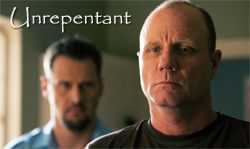 Completed: Unrepentant Everyone has a secret. 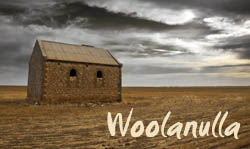 Completed: Woolanulla Completed feature film script for sale to established Producers. 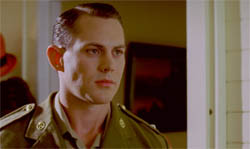 Completed: Unfinished Business No ill deed goes unpunished ... eventually. |
| Copyright 2005 - 2025 Yarnmaker Pty Ltd | Terms of Use | Privacy Statement |
